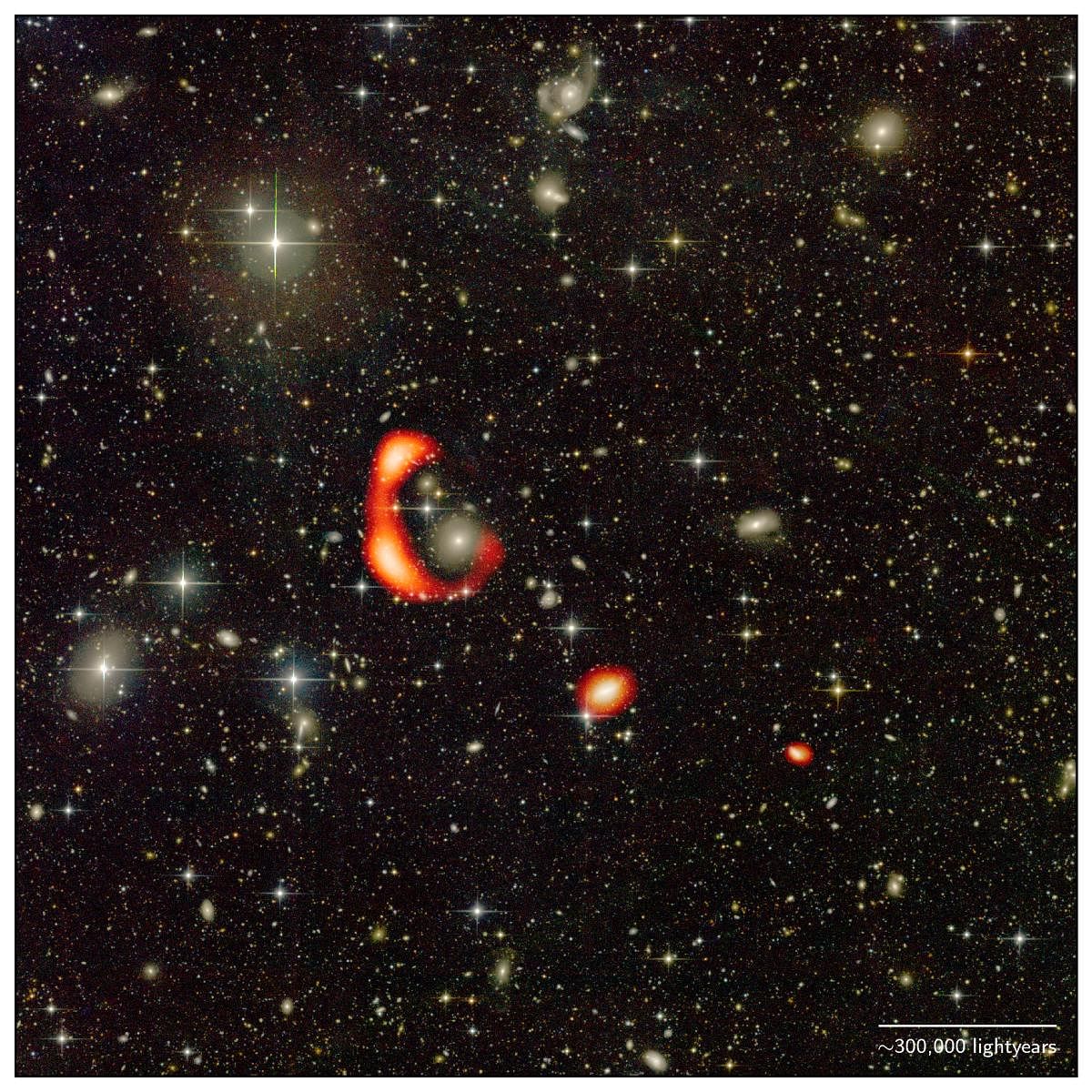
Indian astronomers have found a mysterious ring of hydrogen gas around a far-away galaxy that does not generate any star.
The behaviour is puzzling because the galaxies that contain a lot of hydrogen are the star-forming ones as stars are created primarily out of such high-pressure gas.
Located at a distance of 260 million light-years from the Earth, the galaxy AGC 203001, however, is different due to the giant hydrogen ring, whose formation and behaviour is a puzzle that scientists seek to crack.
The ring is much bigger than the galaxy it surrounds and has a diameter about four times that of the Milky Way.
Using Pune-based Giant Meterwave Radio Telescope (GMRT) and the Canada-France-Hawaii Telescope (CFHT) at Mauna Kea in Hawaii, Indian astronomers along with their collaborators in France (CNRS scientists) not only found how the gas surrounded the galaxy like a giant ring but also its distribution better.
“This galaxy was first discovered around ten years ago in a radio survey that sought to find out galaxies with huge amount of hydrogen but very little or no star formation. We now get a much better resolution of the galaxy, thanks to the GMRT,” Yogesh Wadadekar, a scientist at the National Centre for Radio Astrophysics, Pune and one of the members of the team told DH.
The hydrogen is distributed in the form of a large off-centered ring extending much beyond the optical extent of this galaxy. While the existing optical images showed no sign of it containing stars, more sensitive optical images obtained from the CFHT observations also didn’t show any sign of starlight associated with a hydrogen ring.
“There is no clear answer as to what could lead to the formation of such large, starless rings of hydrogen. Conventionally, galaxy-galaxy collisions were thought to lead to the formation of such rings around galaxies. However, such rings also generally contain stars. This is contrary to what is found in this ring. Figuring out how this ring was formed remains a challenge to astronomers,” NCRA said in a media statement.
“There is only one other such known system with such a large neutral hydrogen ring. The origin and formation of such rings is still a matter of debate,” said Omkar Bait, lead author of the study and a PhD student at NCRA.
Wadadekar said nearly 10 hours of observation were carried out using the GMRT in December 2017 while the astronomers observed the same galaxy for two hours with the Hawaii telescope in March 2019.
The results have now been published in the Monthly Notices of Royal Astronomical Society.
In addition to the two French scientists, the NCRA team collaborated with scientists at the Indian Institute of Astrophysics, Bengaluru, and a researcher at the German agency AIRUB.
